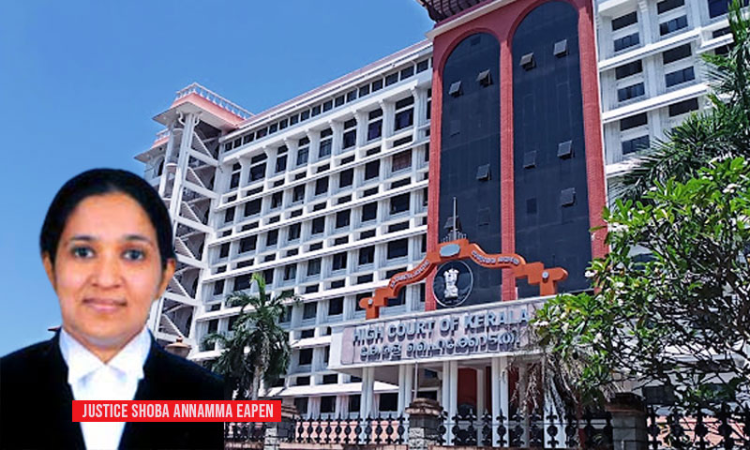- Home
- /
- High Courts
- /
- Kerala High Court
- /
- Kerala Building Tax Act, 1975 |...
Kerala Building Tax Act, 1975 | Buildings To Be Assessed Separately If Structurally Different: High Court
Navya Benny
4 Nov 2023 1:00 PM IST
The Kerala High Court has held that where separate buildings are constructed, albeit for for a common purpose, the buildings would have to be assessed separately for the purposes of building tax, if the same are structurally different. Perusing Section 5 of the Kerala Building Tax Act, 1975, (hereinafter, the 'Act, 1975'), which provides that the plinth area has to be assessed on every...
The Kerala High Court has held that where separate buildings are constructed, albeit for for a common purpose, the buildings would have to be assessed separately for the purposes of building tax, if the same are structurally different.
Perusing Section 5 of the Kerala Building Tax Act, 1975, (hereinafter, the 'Act, 1975'), which provides that the plinth area has to be assessed on every building, the construction of which is completed, Justice Shoba Annamma Eapen observed:
"For assessment of building tax, if structures are different, the buildings have to be assessed separately and the only exception is that it should not be an appurtenant building for more enjoyment of the main building".
The petitioner owned 17 independent buildings having separate building numbers. After completion of construction of five out of 17 buildings, assessment was completed separately in the year 2009. On completion of the remaining 12 buildings thereafter, assessment was made reckoning the 17 buildings as a single unit.
The petitioner's appeals against such assessment before the Sub Collector, and District Collector of Wayanad, were dismissed, pursuant to which he filed the present plea.
It is the petitioner's case that the 17 buildings were constructed independent buildings in his property, which are separately numbered and structurally separated. He submitted that as per Section 2(e) of the Act, 1975, the assessment has to be made separately.
It was added that as per Section 5(1) of the statute, tax is to be charged based on the plinth area at the rate specified in Schedule-I on every building, the construction of which is completed on or after the appointed day; and since all the buildings, though constructed in the property belonging to the petitioner, are structurally different and constructed separately, assessment would have to be done separately.
On behalf of the 1st respondent Tahasildar, it was averred that the petitioner was the owner of the resort 'Rain Country Resort, Lakkidi', having a total plinth area of 1471.78 sq.mtr. The Tahasildar submitted that on verification of the documents produced by the petitioner, it was found that the petitioner himself was the Managing Director of the said resort and that the buildings in the premises were owned by him. It was stated that it was on the basis of the said findings that the tax was assessed treating the 17 buildings as single unit, since they were under a single administration and form part of the hotel and were functionally integrated as a single unit.
Government Pleader Arun Ajay Shankar also argued that as per Section 2(e) of the Act, the buildings could only be treated as a a single unit since they had been constructed by the petitioner for better use as a resort for renting out rooms and was functionally a single unit, although structurally different.
The Court discerned that the respondents had no case that the petitioner had constructed a main building with other appurtenant buildings for more enjoyment of the main building.
The Court noted that all the buildings had been constructed by the petitioner as separate structures for a common purpose as a resort, and accordingly stated that assessments would have to be made exclusively on the structure of the building.
Relying upon the decision in District Collector, Civil Station, Kakkanad & Ors v. V.K.Sreekumari Kunjamma (2011), the Court observed that assessment would have to be completed for each and every building constructed and the owner of the building would thus have to file as many returns as the number of buildings he has constructed.
"Therefore, separate building tax assessment has to be made in the name of the very same person for all the buildings constructed or repaired by him, which attract liability. However, for the purpose of assessment of building tax, there is no provision in the Act to make only a single assessment for the plinth area of the building constructed by a person. The same person can be subject to separate assessment for building tax for each and every building," it was held.
The Court went on to state that although the buildings in this case had been separately constructed for the purpose of renting out, each building was separate, and could hence be rented out separately.
"The charge is on the building as such and not with reference to its owner. Therefore, the 17 buildings, which are structurally different with separate numbers, have to be assessed separately," the Court added, while setting aside the impugned assessment order.
The assessing authority was thereby directed to reconsider the assessment treating all the 17 buildings as separate units, within a period of two months from the date of receipt of a certified copy of the judgment.
The petitioner was represented by Advocates K.M. Firoz and M. Shajna.
Citation: 2023 LiveLaw (Ker) 625
Case Title: E.K. Anil v. Tahasildar & Ors.
Case Number: WP(C) NO. 3848 OF 2012


